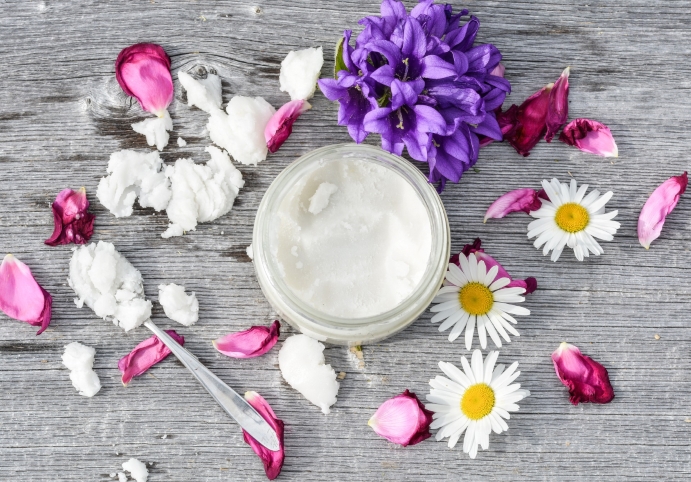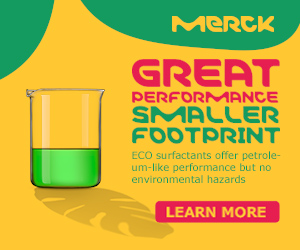Cosmetics & Personal Care
Top trends for cosmetics and personal care 29th April 2019
By Sarah Harding, PhD
Natural ingredients continue to be a mega-trend across many industries. In cosmetics and personal care, this has driven a de

Natural ingredients continue to be a mega-trend across many industries. In cosmetics and personal care, this has driven a demand for ‘free-from’ products. As stated in an industry blog by in-cosmetics Global earlier this year, “This year’s key ingredients are valued as much for what they don’t contain as what they do.”
Of course, this includes ingredients that have long been seen as ‘good to avoid’ such as palm oils, microplastics, petrochemicals, alcohols and parabens, as well as new ones like ‘quats’ – quaternary ammonium compounds, used as potent disinfectants and as conditioning agents for skin and hair products. Such ingredients are being replaced with more sustainable, eco-friendly alternatives, such as biodegradable cellulose particles, apricot kernels, pumice, or walnut shells in lieu of microplastics. A variety of oils can substitute for palm oil (e.g. sweet almond oil, grapeseed oil, olive oil), and natural or synthetic alternatives to parabens include plant extracts or other more benign chemicals. As such alternatives become more mainstream and easier to source, they are being incorporated into more products.
Halal products are also going mainstream across Europe, making halal-approved ingredients a greater focus for formulators and suppliers. Alongside Islam being the fastest growing religion in the world, recent changes to legislation in Indonesia requiring consumer products to have halal certification has been a catalyst for growth. Although the Asia Pacific region is leading this trend, there is increasing global interest due to an association with health and well-being – for example, halal products are perceived as being ethical, and certification ensures that they are alcohol-free and traceable.
Another growing trend is edible beauty. Ingredients such as honey, caffeine and vegetable oils represent healthy and eco-friendly alternatives, and their inclusion makes products less complex and appealing to consumers. Food-derived ingredients have created new opportunities for food manufacturers in the cosmetics and personal care sector, and formulators in the beauty sector are finding inspiration at the supermarket with creations such as popsicle moisturizers and sugar cookie scrubs (Clariant).
Perhaps the next step – to consumable skincare – was an obvious one. As part of the in-cosmetics Global conference programme, Nutrivitality’s Alex Campbell explained how drinkable skincare can provide “true beauty from within”. Consuming collagen as a form of drinkable skincare could offer marked benefits, he said, adding that drinking collagen is a more logical solution than current topical skincare regimes.
Wellness, happiness and intrigue are all emotions associated with beauty products. These can trigger emotional purchases, so it is important to excite the consumer with novel formats and textures. In addition, a key beauty trend for 2019 is emotional support – for instance, cosmetics that provide stress relief or help sleeping. One example is Givaudan’s active cosmetic ingredient Sensityl, derived from micro-algae and said to offer “dual benefits on beauty and well-being”.
Artificial intelligence (AI) is receiving a lot of attention in the pharma industry – cited by Forbes as one of the top healthcare predictions for 2019, the long-anticipated era of AI in healthcare is finally here, revolutionizing drug development as well as finding new targets for existing molecules. These developments are mirrored in the cosmetics sector. As explained by Professor Jose Prieto of University College London at in-cosmetics Global, AI and multivariate analyses are already being used to predict, find and interpret the bioactivities of products that may be of interest.
AI-powered technologies can also, of course, help to shape marketing strategies. AI Marketing (AIM) is taking the world by storm across many sectors, and cosmetics and personal care is no different. AIM enables highly personalized experiences that can have a greater impression on the consumer while costing less than traditional high-dollar campaigns. Tools are already available to gain agility in responding to customer evaluations and upcoming trends, and personalize recommendations by selecting products that best suit consumers.
This leads us neatly into our final trend – personalized products. This is perhaps best exemplified by Azelis’s Unique You range, which encourages individuality and enables consumers to celebrate what makes them truly unique. Six formulations are dedicated to creating cosmetics products that are personalized and fit unique needs. It includes, for example, a body lotion for those who love spending time outdoors, giving a powerful shield against extreme weather conditions, as well as a hand cream that protects against blue light, for those more indoor types. Not to be outdone, DSM dedicated its in-cosmetics Global stand to individuality – celebrating diversity in skin care needs both seen (as in skin tone) and unseen (the microbiome). DSM scientists are exploring the potential of a wide range of molecules to discover one that can deliver results for everyone.
These trends and others are shaping the cosmetics and personal care industry for 2019 and beyond. Chemicals Knowledge is watching this innovative sector as new creations and trends unfold, and we’re all excited to see what comes next!
Author:
Sarah Harding worked as a medical writer and consultant in the pharmaceutical industry for 15 years, for the last 10 years of which she owned and ran her own medical communications agency that provided a range of services to blue-chip Pharma companies. In 2016, she began a new career in publishing as Editor of Speciality Chemicals Magazine, and in 2019 we were honoured to welcome her as Editorial Director at Chemicals Knowledge.
E: Sarah.Harding@ckhglobal.org



